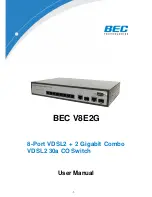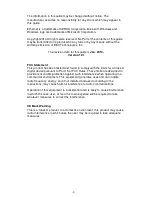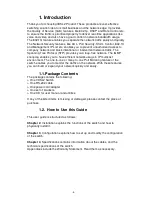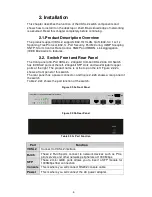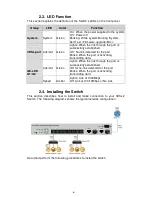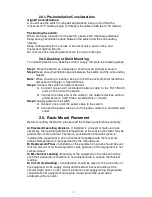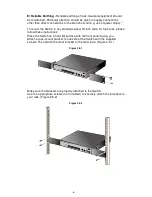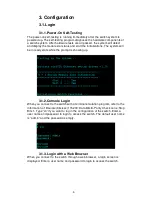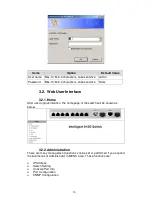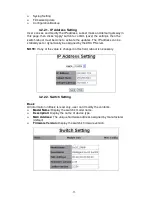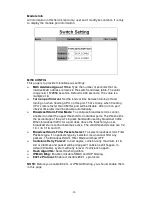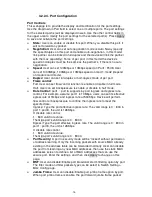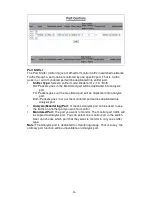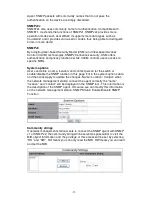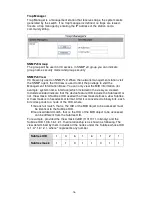
-7-
2.4.1. Pre-Installation Considerations
Gigabit Considerations:
If you will use the switch for Gigabit applications, keep in mind that the
maximum UTP cabling length of Category 5e cable is 328 feet (100 meters).
Positioning the switch:
When choosing a location for the switch, observe the following guidelines:
Keep enough ventilation space between the switch and the surrounding
objects.
Keep cabling away from sources of electrical noise, power lines, and
fluorescent lighting fixtures.
Do not stack free-standing switch more than four units high.
2.4.2. Desktop or Shelf Mounting
To install the switch on a desktop or shelf, simply complete the following steps:
Step 1
Place the switch on a desktop or shelf near an AC power source.
Step 2
Keep enough ventilation space between the switch and the surrounding
objects.
Note:
When choosing a location, keep in mind the environmental restrictions
discussed in Chapter 4, Specifications.
Step 3
Connect the switch to network devices.
A. Connect one end of a standard network cable to the RJ11/RJ-45
ports on the front of the switch.
B. Connect the other end of the cable to the network devices such as
printer servers, VoIP, Video, workstations or routers.
Step 4
Supply power to the switch.
A. Connect one end of the power cable to the switch.
B. Connect the power cube end of the power cable to a standard wall
outlet.
2.5. Rack- Mount Placement
Before mounting the Switch, please read the following instructions carefully,
A) Elevated Operating Ambient -
If installed in a closed or multi-unit rack
assembly, the operating ambient temperature of the rack environment may be
greater than room ambient. Therefore, consideration should be given to
installing the equipment in an environment compatible with the maximum
ambient temperature (Tma) specified by the manufacturer.
B) Reduced Air Flow -
Installation of the equipment in a rack should be such
that the amount of air flow required for safe operation of the equipment is not
compromised.
C) Mechanical Loading -
Mounting of the equipment in the rack should be
such that a hazardous condition is not achieved due to uneven mechanical
loading.
D) Circuit Overloading -
Consideration should be given to the connection of
the equipment to the supply circuit and the effect that overloading of the
circuits might have on over current protection and supply wiring. Appropriate
consideration of equipment nameplate ratings should be used when
addressing this concern.

